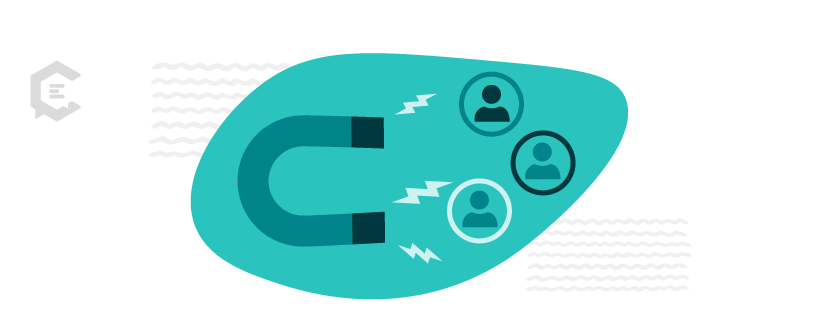Customer retention is providing your customers with a brand experience that keeps them coming back as purchasers and advocates. Instead of a strategy that focuses on acquiring new customers, customer retention focuses on pleasing existing customers in order to lower customer churn or to increase future revenue opportunities.
There are many layers of content marketing because it connects to every aspect of the customer lifecycle. This includes compelling copy to lure your target audience in, clear, concise descriptions that encourage them to take action, and continued communication that keeps them raving about a brand for years to come. The last part is one of the most vital parts of customer retention strategies that will ensure the longevity of a business’s success.
Here, we explore the definition, purpose and value of customer retention, along with expert-guided tips and real-world examples.
What is customer retention?
Quite simply, customer retention is providing your customers with the brand experience that keeps them coming back as purchasers and advocates, according to Esther Poulsen, CEO and founder of Raare Solutions. This is communicated in a variety of ways, she says, starting from the first interaction with a potential user.
Some of the mediums include sales messages, relating a brand’s story through personalized, engaging content, multiple touchpoints through every lifecycle stage, available communication channels with fast responses, community support and discussion, and creating a ‘next best experience,’ rather than a ‘next best offer.’
“Entitled customers demand that brands repeatedly show how well they are understood and that their needs are being met with a personalized sales experience,” Poulsen continues. “Giving that experience ensures that customers remain loyal to the brand over time, even over times of uncertainty and crisis, as we saw in 2020.”
Why is customer retention important?
Poulsen says customer retention isn’t just necessary — it’s a vital component of an effective communication strategy. It represents the highest opportunity for operational efficiency and preserving the bottom line of sales and marketing budgets. As she explains, it can cost anywhere from five to 25 times more to acquire a new customer than to retain an existing one, painting a clear picture of where effort should be focused.
“Beyond just a resale, your customers are your biggest brand advocates. Keep them happy, and they will, in turn, evangelize a brand’s offerings to their friends, family, business associates, anyone that would be interested in what the brand has to offer,” Poulsen shares. “People today love to share what they love to own, and building that trust with your established clientele will help pollinate the prospective customer sphere to bring new business at a lower cost overall.”
5 do’s of customer retention
As you begin to explore customer retention strategies, it is smart to follow guidelines from experts. The goal is to meet a customer where they are and provide resources, information and fodder that benefit their life, solve an issue, or make them feel heard and appreciated.
The top-rated do’s of customer retention include:
- Do personalize their experience.
- Do define lifetime customer value, no single sales acquisitions.
- Do turn your user base into a community.
- Do share your brand story.
- Do surprise your customer.
1. Do personalize their experience.
And remember, this goes beyond adding a name to an email. As Poulsen explains, brands and their copywriters/content strategists should be paying attention to browsing history, purchases, and other information to create a customized journey for each customer.
“Campaign platforms that incorporate personalization logic allow you to dynamically control messaging with content that is relevant to the individual,” she explains. “Ultimately, the best brands create a brand experience on the individual level.”
2. Do define lifetime customer value, no single sales acquisitions.
According to Cassandra Rosen, president of FK Interactive, future revenue can be more accurately predicted if a business understands the full lifetime value of a customer rather than focusing on single-sale acquisitions. By measuring in this manner, you generate a clearer picture of any and all customers’ potential net profit.
“The lifetime value of a customer should also be taken into consideration with attribution to referrals and word-of-mouth sales,” she continues. “These measurement tactics are often overlooked, although a better indicator of future revenue, because they require analyzing a longer-term customer longer-term, instead of a single sale.”
3. Do turn your user base into a community.
What is one thing all customers of a brand have in common? They all bought something, signed up for a service, or made another action.
Though that may feel like a superficial metric, a better interpretation is that your users share some characteristics that brought them to you in the first place, according to Evan Davies, head of solutions for partnerships and marketing for Coda. These include problems, aspirations, and backgrounds, and depending on your product, the list can be lengthy.
4. Do share your brand story.
Creativity can go a long way in every aspect of life, whether it’s managing remote work and distance learning or reconfiguring a business plan to adjust to a pandemic. As Poulsen shares, brands need to exercise innovation to remain relevant and meet their customers in the part of the life they are currently experiencing. Part of that is connecting on a human level, where captivating brand stories become an intricate part of a content strategy.
“Building a story-best messaging strategy — whether it be customer testimonials, the viewpoints of your brand’s employees, or sharing how your brand is interacting with the world through charity or advocacy — all create a harmonized brand experience,” she shares.
5. Do surprise your customers.
While we may associate ‘surprises’ with children, the truth is we never outgrow the desire to be unexpectedly delighted. That’s why Davies says to make every effort to add joy to a customer’s experience with a brand. If they are just getting started, offer them support. If they are super engaged? Send ‘em some swag with an Instagrammable-card.
“Tiny, personal acts of care mean a lot in a world where you can blast a templated email to thousands of people with the click of a button,” he explains.
6 don’ts of customer retention
There are ways to build customer loyalty and retention — and tactics that will diminish your community overnight. When you start to invest in your current customer base, make sure it’s done in a genuine, appropriate manner — and not based on the eager race to make a sale or improve overall numbers.
According to experts, the don’ts of customer retention strategies include:
- Don’t pander to social trends.
- Don’t waste your customer’s time.
- Don’t think you know everything.
- Don’t ignore data.
- Don’t forget about your customers.
- Don’t be a talking head.
1. Don’t pander to social trends.
Though, yes, it is vital to remain relevant to the top news stories and movements, it’s not smart to hop on every single social trend that rolls around. Part of this is understanding your brand, and its core values, so you don’t send out a tweet or email that’s regarded as insensitive or disingenuous.
“If you have something to say, by all means say it, and be prepared to stand for what you believe in, but throwing about a banner just to look ‘on trend’ is easily seen through and insults the intelligence and conviction of your customers,” Poulsen warns.
2. Don’t waste your customer’s time.
When a customer reaches out for help, recommendations, or something else, it’s vital to ensure your response is top-notch. A brand can take the worst action to waste a customer’s time, not provide easy-to-understand information, or leave them desiring more from the customer service conversation. Or by sending out an email blast that leaves more questions than answers.
“Your customers are busy; make sure you are offering value wherever you can, and treat their time and attention as carefully as you’d like yours to be treated,” Davies recommends.
3. Don’t think you know everything.
At the end of the day, a business is only as strong as its customer base, says Robert Blankenship, founder and CEO of WebFindYou. What does he mean? There is much to learn and create by asking your customers for feedback, and more importantly, actually making changes because of it.
“If a customer has a suggestion of something they would like to see from your brand or a way you could improve, you should consider what they have to say and whether or not it could be truly beneficial for your business,” he says. “This shows that you have their best interests in mind, which is crucial for customer retention.”
4. Don’t ignore data.
In order to personalize your marketing to improve your customer retention strategies, you’ll need information and data about your customers and those engaging with your business.
“Although customer data used to come with high costs, many third-party vendors are now available to help you better gather and analyze that data, as well as connect it back to real ROI and potential future sales,” Rosen explains. “You can also use social analytics, both from your business and your competitors, to gather customer data. Use these data analytics and pay attention to granular details, including age, location, seasonal trends and purchases, as well as household and income details.”
5. Don’t forget about your customers.
Unfortunately, you can’t have a deep, personal, know-you-by-name relationship with each and every customer. However, you should do all you can to have at least one member of your team in charge of keeping a pulse on customers’ segments when they reach certain steps in their lifecycle, Davies says.
“Plan for this proactively, and keep the customer experience higher in your mind than internal frictions or optimizations,” he continues. “When companies lose sight of the customer experiences, users often fall through the cracks ー either suffering from low responsiveness, or lost context as new teams are involved.”
6. Don’t be a talking head.
Does anyone like to be talked ‘at’ rather than being invited to partake in an engaging conversation? Nope. That’s why part of customer retention is including your audience in the discussion. Poulsen says it’s essential to make it easy to leave reviews and share on social channels.
“Feedback also provides a convenient means to evolving personalized engagement with the customer based on their remarks,” she adds.
3 great examples of customer retention strategies
Sometimes the best way to learn and develop strategies is to take notes from brands that have been successful with customer retention.
Here, we explore three examples:
- Personalization from Amazon
- Community engagement from Fitbit and Peloton
- Innovation from Tussock Jumper
1. Personalization: Amazon
Poulsen says Amazon has set the standard for content personalization based on big data. While you can buy nearly anything on Amazon, having too many options can be paralyzing for some. To reduce churn and help the customer find what they want, Amazon adopted a collaborative filtering engine.
“CRMs strive to attain a 360 view of the customer. And Amazon takes this holistic view seriously. The CFE analyzes the items previously purchased, online shopping cart or wish list, products reviewed and rated, and frequent searches,” she explains. “Then, the personalized recommendation system offers products that people with similar profiles have purchased. This method generates 35 percent of the company’s sales annually.”
2. Community: Fitbit and Peloton
Part of creating a community is gamifying the customer experience. Since humans inherently like a little bit of competition, it’s a smart way to join customers together and create an on-going engagement. Two health and fitness companies that do this effectively are Fitbit and Peloton.
“Challenge customers with contests, loyalty programs, rewards programs and create experiences that allow passionate customers to be recognized for their brand engagement and compete against other like-minded clients. All of this keeps high interest in the brand and establishes a consistent pipeline of purchases,” Poulsen adds.
3. Innovation: Tussock Jumper
Tussock Jumper, an import wine brand, was tasked with adjusting to the pandemic’s tariff challenges at the start of 2020. With stores shut down and partnerships on hold, they doubled down to help customers taste around the world.
Over several months in 2020, they reached 35 million customers and saw a 50 percent increase in sales by helping sales and retailers understand how to upgrade takeout orders by adding their single-serve wines to curbside orders and other efforts. Though on the spot, this innovation not only helped them stay afloat but built customer loyalty and retention.
Boost customer retention with quality content from ClearVoice. From articles and ebooks to newsletters and videos, we’ve got you covered. Talk to a content specialist today to learn more.









